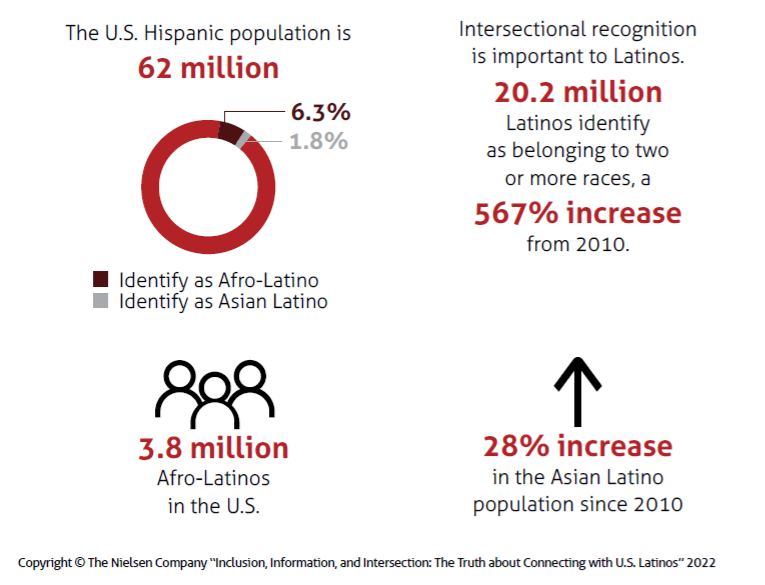
It’s Cinco De Mayo, so I am sure many of you will indulge in margaritas and tacos today, but what does Cinco De Mayo mean for advertising, Hispanic-owned media, and buying power?
The answer to this question is debatable; many don’t even know the true history behind the holiday, but there is an opportunity for publishers and brands to strategize.
“Publishers should use cultural holidays as a starting point to build a long-term commitment to their audience,” Sandy Ramous Zohios, Product Marketing Lead for H Code, explained. “This will inadvertently help brand partnerships maximize their exposure, reach, and impact while providing the consistency needed to develop a deeper relationship with the Hispanic consumer.”
With a population of 62 million, Hispanics represent nearly 19% of the U.S. population, making up for more than half of the population growth over the past decade and skyrocketing in buying power.
Hispanic buying power is currently at $2.8 trillion, representing a 150% increase in the last decade. Remember, identity doesn’t fit into a single box, as many Hispanics identify as Afro-Latino and Asian-Latino.
There are more than 3.8 million Afro-Latinos in the U.S., representing 6.3% of all Latinos, and the Asian population increased by 28% since 2010, rising to 1.1 million and representing 1.8% of all Latinos.
According to the 2022 Hispanic Market Guide, diversity within Hispanic communities impacts America’s growing multicultural mainstream. Understanding Cinco De Mayo is a good starting point for unlocking long-term growth between brands and Hispanic media publishers.
What is Cinco de Mayo?
Cinco de Mayo (Spanish: “Fifth of May”), also known as the Anniversary of the Battle of Puebla, is a holiday celebrated in the state of Puebla and the U.S. in honor of a military win in 1862 against the French army led by Napoleon III. According to critics, the enthusiasm behind the holiday didn’t kick in until it was linked to the promotion of Mexican cocktails. Many U.S. festivities perpetuate negative stereotypes of Mexicans and promote excessive drinking.
Despite the negative connotation that is sometimes associated with Cinco de Mayo, there are still ways for publishers and brands to collaborate and create culturally respectful campaigns.
“Considering that Cinco de Mayo is a U.S.-created “holiday” that has evolved, the best way to capitalize on the momentum is by avoiding stereotypes and celebrating Mexican culture and the contributions of Mexican Americans in the U.S.,” explained Isabella Sanchez, VP of Media Integration at Zubi. “Cinco de Mayo has become a platform mostly for snacks, food, beer, and liquor brands to kick off the summer. Many do it well with respectful, celebratory tones and emphasizing the importance of gathering with family and friends. Those brands executing campaigns tied to Cinco de Mayo are typically targeting the entire U.S. market, not just Hispanics, as it provides the opportunity to increase awareness and sales.”
The Key to a Fruitful Future
Rather than using Cinco de Mayo as a shallow marketing opportunity without realizing its significance, brands must approach the holiday with cultural caution. Gen Z and Millenials prefer the real deal over anything fake, and brands seeking to target younger demographics should take a closer look at the Hispanic community.
“With a purchasing power of 1.9 trillion and doubling in the years to come, the Hispanic consumer economic power continues to grow much faster than the country as a whole,” said Zohios. “This demographic is not a monolith group. Brands need to take time to recognize the diversity within this population. Brands should tailor their messaging based on different traditions, cultures, and dialects to build a stronger relationship with the Hispanic Consumer.”
Brands must also put cultural literacy at the forefront, which means solid internal DEI teams are crucial. According to a recent study, over 50% of people ages 13-49 have quit a culturally illiterate brand, saying it “offended them or disrespected their values.” Seventy-two percent of Black female parents ages 25-49 have quit a brand for the same reason.
By utilizing Hispanic marketing experts, brands can strategize and establish best practices around respecting and celebrating Mexican culture, art, music, and food. They must honor the duality of Hispanic culture by crafting marketing messages that celebrate the diversity of this audience segment.
